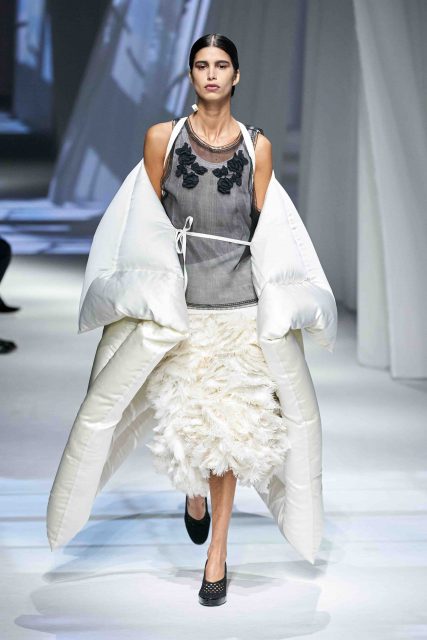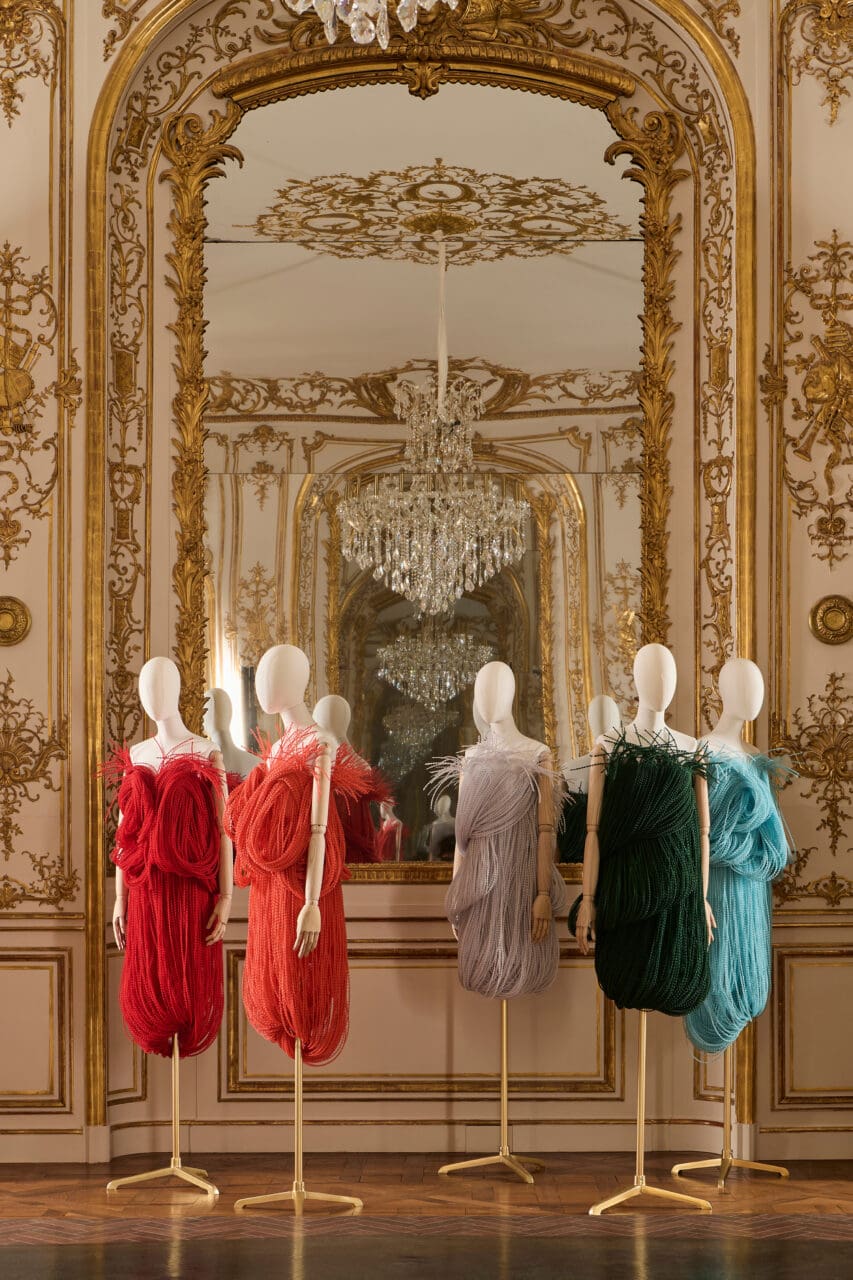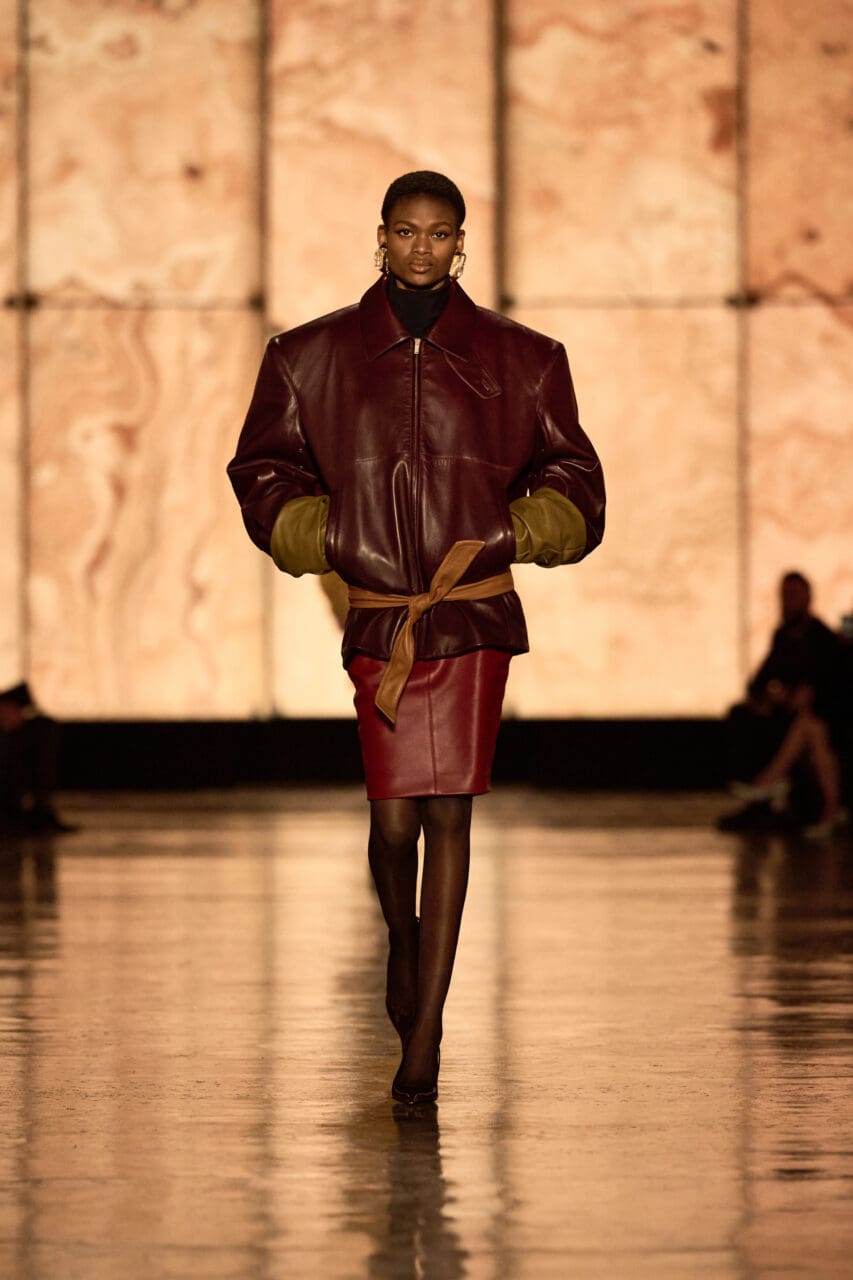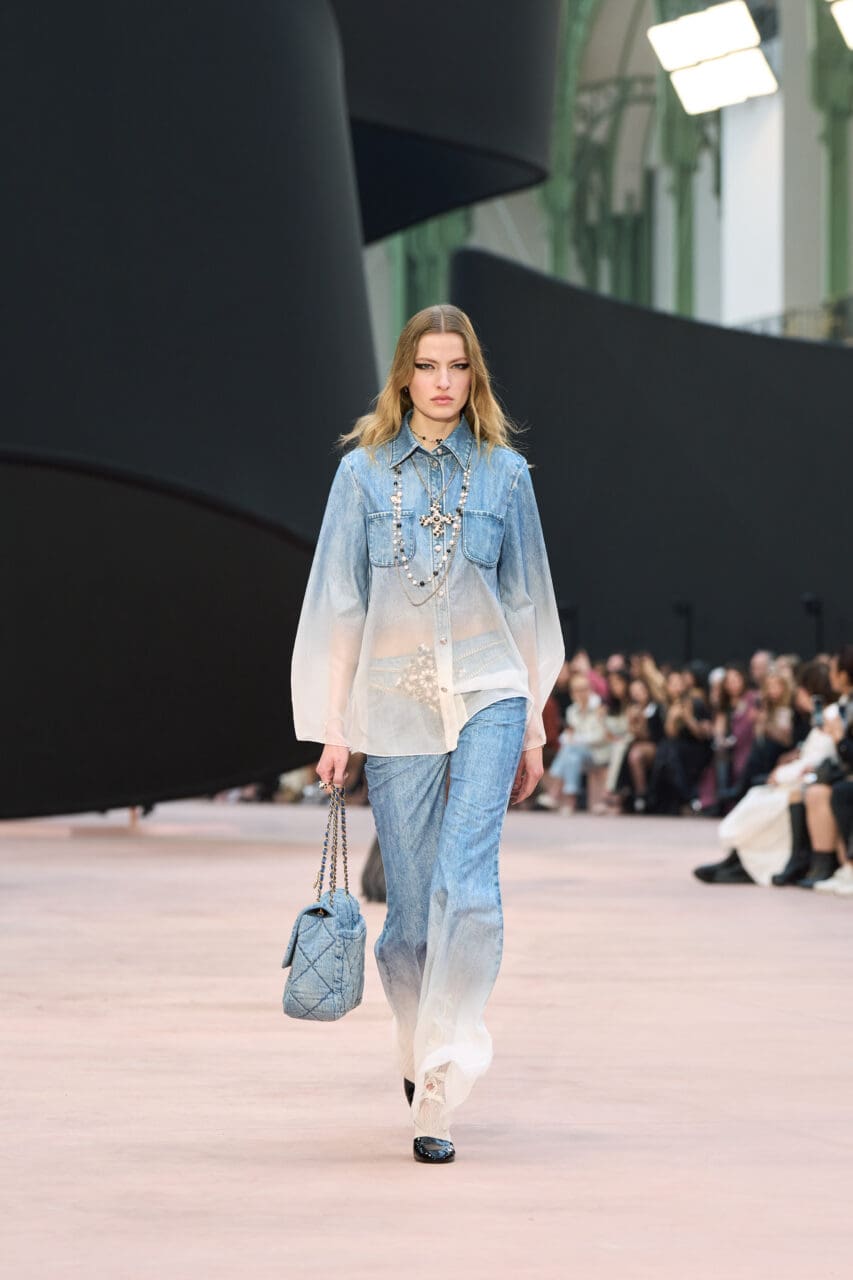There were great expectations for Kim Jones’s Fendi debut. Three years into his menswear tenure at Dior, the designer who once staged a Supreme collaboration for Louis Vuitton and worked for years for Umbro has unquestionably become more couture than streetwear. The literary and artistic sources that shaped his Fendi collection couldn’t be further from the street, although Virginia Woolf did always try to get back to the city. It was conceived in the spirit of Charleston Farmhouse, the 16th-century Sussex retreat of the Bloomsbury set located not far from the village of Rodmell, where Jones, now 41, was partly raised and owns a house. “It’s very personal to me,” he said on a video call from Paris.
Young Jones would spend school trips exploring the house and learning about Bloomsbury’s bohemian members. If they had been alive today, you can imagine he would have enlisted them for one of the menswear collaborations that embody his practice at Dior and, previously, Louis Vuitton. His Fendi collection showed a more single-handed demonstration of how Jones expresses himself in form and decoration. “The movement and freedom of things were quite interesting to me,” he said. While Jones has dabbled in womens wear in past endeavors, it also unveiled the first real idea of what his vision for women’s dressmaking looks like.
Of carving out that silhouette, Jones said he observed “the reality of what women around me are wearing. I have friends that just buy couture clothes, and they don’t buy big ball gowns. They buy real clothes, things that fit their bodies.” Above all, he wants to create work “reactive to the time we’re living in.” Enter Orlando, Woolf’s time-traveling tale of androgyny and fashion’s favorite lexicon for the study of genderlessness. He employed its premise to illustrate his Grand Tour from Rodmell to Rome. “Orlando was published in 1928, and Fendi was founded in 1925,” he pointed out. The “journey from Bloomsbury to Borghese” interpreted Vanessa Bell and Duncan Grant’s frescoes of Charleston in hand-beaded prints and the marbles of the Galleria Borghese in painted tailoring. Dresses evoked the wet drapery of its Bernini sculptures.
In the prerecorded show, Jones echoed Orlando’s themes in a coed cast featuring many of his high-profile friendships: Demi Moore, Kate and Lila Moss, Christy and James Turlington, Adwoa and Kesewa Aboah. The family constellations celebrated Fendi’s values as a matriarchal fashion dynasty, whose class-act custodian, Silvia Venturini Fendi, still serves as artistic director of accessories and menswear. Joining the cast were her daughters, Leonetta Fendi and jewelry designer Delfina Delettrez, whom Jones has now named as creative director of jewelry at the LVMH-owned brand. Delettrez’s supersized chandelier earrings graced evening gowns with a 1930s Vionnet silhouette, a certain slinkiness that resonated in Moore’s slithery silk suit, which was dying to morph into a dress.
Other tailoring felt more rigidly structured for male anatomy, framed by floor-sweeping kingly capes. At times, forms grew shapeless, like a blush pink look of highly textured layers topped off with a lace coat webbed from roses or a mound of marbled garments draped over Naomi Campbell. Jones’s juxtapositions culminated in split-personality dresses hybridized from half an evening gown and half a blazer or shirt. They had an air of upholstery about them, perhaps a nod to Charleston. The inspiration was found in the sketches of his predecessor, Karl Lagerfeld, who left 54 years’ worth of archives behind him when he died two years ago. Lagerfeld’s Fendi was epitomized by Roman modernism, a handsome glamour that often found time for quirk. Jones’s approach was melancholy in contrast—“romantic,” as he said—which perhaps defines a more British approach to the theater of haute couture.
You could project Jones’s background in menswear on his dressmaking debut, but at its core it was a demonstration of the unrestrained choice and experimentation that the practice offers its new members: a wealth of expressions. Reaching this pinnacle of fashion had to be emotional, even for a designer with Louis Vuitton and Dior on his resume. “We do have those pinch-ourselves moments of pride,” he said, referring to team members who have taken part in his ascent. Cycling around the Sussex countryside as a child, Jones said he never dreamed of haute couture. “I always thought I’d be working in a bank, married with kids.”







